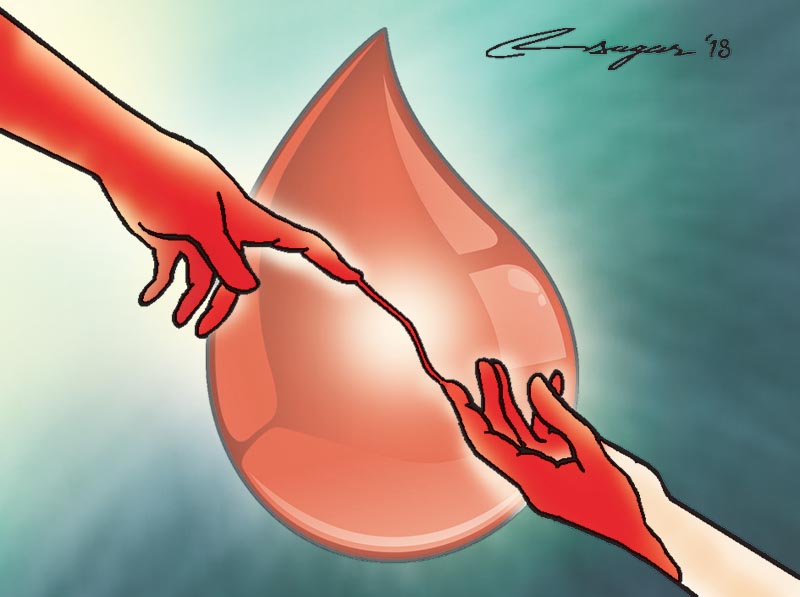262,439 pints of blood collected last fiscal
Kathmandu, July 28
Nepal Red Cross Society today said it collected 262,439 pints of blood through blood donation camps organised in various districts in the fiscal 2017-18.
It is an increase by more than 10 per cent compared to previous fiscal when 236,799 pints of blood were collected from across the country. Patients were provided with 3,44,933 pints of blood and blood components during the period, which shows that there is a gap between the demand and supply of blood. The four main blood components include plasma, red blood cells, white blood cells, and platelets.
This was made public by Nepal Red Cross Society amid a programme organised in Pulchowk, Lalitpur, to mark 52nd anniversary of the launch of blood transfusion service in Nepal. The year when blood transfusion service was launched 52 years ago, Nepal Red Cross Society had collected 157 pints of blood. Nearly one-fourth of the blood is collected in the valley.
Speaking at the programme, Nepal Red Cross Society chair SanjeevThapa said the humanitarian organisation had established blood transfusion service centres and units in 108 places of 73 districts.
Stating that Nepal Red Cross Society was bearing an additional cost of Rs 15 million per year from its fund for blood transfusion service, he urged the government to increase its funding in this sector.
Dibya Raj Poudel, chief of Humanitarian Values and Communications Department at Nepal Red Cross Society, informed that it had been providing blood transfusion service through 22 district-level blood banks, 42 emergency units and 38 hospital units of the services across the country. According to Central Blood Transfusion Service, Kathmandu, it largely depends on volunteer blood donors for blood and blood components.
The CBTS collected 62,353 pints of blood in the fiscal 2017-18. Women accounted for only 16.15 per cent of blood donors. The report shows that 3.10 per cent of donors were tested for blood group of A, B, O and AB negative. AB positive blood has been categorised as the rarest blood group with just 0.42 per cent.
Last year, 66 blood donors were tested positive for HIV, 466 for Hepatitis B and 351 for Hepatitis C. According to World Health Organisation, voluntary blood donation rates are not usually high in the South Asian region, but Nepal is a notable exception. In fact, the nation has more than 500 blood donor groups. It estimates that blood donation by 1 per cent of the population can meet a nation’s most basic requirements for blood.






